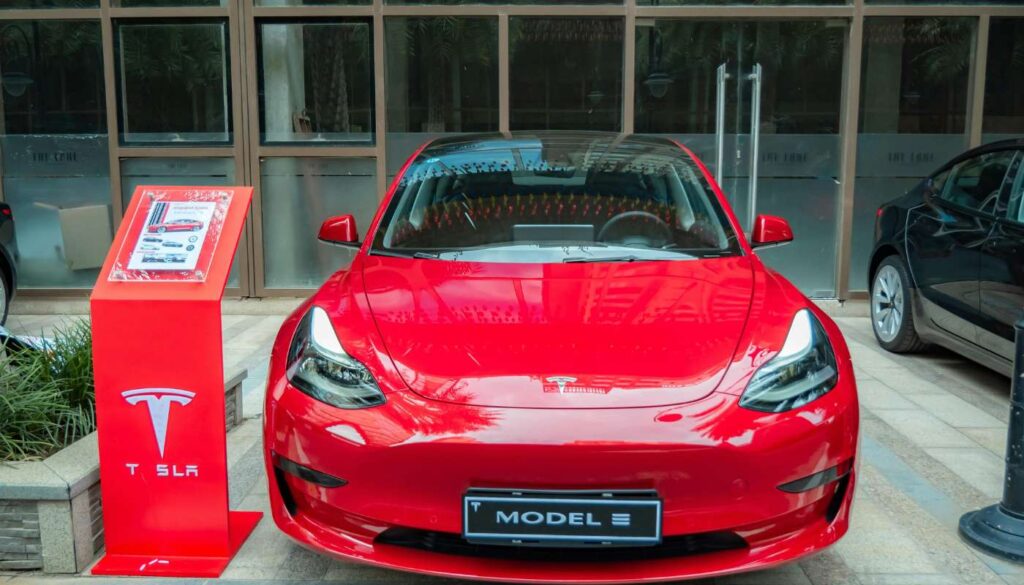Table of Contents
Tesla, Inc., founded in 2003 by Martin Eberhard and Marc Tarpenning, has transformed from a niche electric vehicle (EV) manufacturer into a global powerhouse in sustainable energy and transportation. With its innovative technology, visionary leadership under Elon Musk, and ambitious goals, Tesla has redefined what is possible in the automotive industry and beyond. This case study delves into Tesla’s rise, its strategic initiatives, and the challenges it faces as it continues to push the boundaries of technology and sustainability.
Early Days and Vision
Tesla’s inception was driven by a vision to accelerate the world’s transition to sustainable energy. The company’s early focus was on developing electric vehicles that could compete with traditional internal combustion engine (ICE) vehicles in terms of performance, range, and affordability. This vision was revolutionary, as it aimed to address the dual challenges of climate change and the depletion of fossil fuels.
The launch of Tesla’s first production car, the Roadster, in 2008 marked a significant milestone. The Roadster, based on the Lotus Elise chassis, demonstrated that EVs could offer high performance with an impressive range, proving the viability of electric propulsion. However, the company’s journey was beginning, and the company faced numerous challenges in scaling production and establishing a brand reputation.
Innovative Products and Technological Advancements
Tesla’s success is deeply intertwined with its commitment to innovation and technological advancements. The Model S, introduced in 2012, was a game-changer for the EV market. It offered a sleek design, long-range, and high performance, setting new benchmarks for electric vehicles. The Model S also introduced features such as over-the-air software updates, which allowed Tesla to continuously improve its vehicles’ performance and add new features without requiring physical recalls.
Following the Model S, The company expanded its lineup with the Model X SUV in 2015 and the more affordable Model 3 sedan in 2017. The Model 3 was particularly significant, as it aimed to bring EV technology to a broader audience with a more accessible price point. The Model 3’s success was pivotal in driving mainstream adoption of electric vehicles, making Tesla one of the most valuable car manufacturers in the world.
In addition to its vehicles, Tesla has made significant strides in battery technology and energy storage solutions. Introducing the Powerwall, Powerpack, and Megapack has positioned Tesla as a leader in energy storage, enabling homeowners, businesses, and utilities to store renewable energy and enhance grid stability.
Production and Scaling Challenges
Scaling production has been one of Tesla’s most significant challenges. The company has faced various issues, from manufacturing bottlenecks to supply chain disruptions. For instance, the production ramp-up of the Model 3 was marred by what Elon Musk termed “production hell.” The company struggled to meet its ambitious production targets due to both technical and logistical challenges.
To address these issues, Tesla has invested heavily in automation and vertical integration. The company’s Gigafactories, including those in Nevada, Shanghai, Berlin, and Austin, represent a significant strategic shift towards in-house production of batteries and other components. These factories aim to streamline production processes, reduce costs, and meet the growing demand for Tesla vehicles and energy products.
Market Disruption and Competitive Landscape
Tesla’s entry into the automotive market has disrupted traditional manufacturers and altered the competitive landscape. Established automakers, recognizing the growing importance of electric vehicles, have ramped up their EV initiatives in response to the company’s success. Companies like General Motors, Ford, and Volkswagen have introduced their electric models and invested in EV technology.
Companie’s approach to market disruption extends beyond just vehicles. The company’s direct-to-consumer sales model, bypassing traditional dealership networks, has reshaped the car-buying experience. This model allows Tesla to maintain better control over its customer relationships and streamline the sales process.
Moreover, Tesla’s focus on software and technology integration has set it apart from competitors. Features such as Autopilot, companies’ semi-autonomous driving system, and Full Self-Driving (FSD) capabilities represent a forward-thinking approach to automotive technology. While full autonomy remains a work in progress, Tesla’s continuous development in this area keeps it at the forefront of automotive innovation.
Sustainability and Environmental Impact
A core component of Tesla’s mission is its commitment to sustainability. The company’s vehicles produce zero tailpipe emissions, contributing to a reduction in greenhouse gases and air pollution. Tesla’s energy products, such as solar panels and energy storage systems, further support this mission by promoting the use of renewable energy sources.
Tesla’s environmental impact is not without controversy, however. The production of lithium-ion batteries, crucial for the companies vehicles and energy products, involves resource extraction and environmental concerns. The brand has made efforts to address these issues through recycling programs and sustainable sourcing practices, but the industry-wide challenge of minimizing the environmental footprint of battery production remains.
Financial Performance and Market Impact
Tesla’s financial performance has been marked by both rapid growth and volatility. The company achieved profitability in 2020 after years of financial losses, a milestone that boosted investor confidence and drove up its stock price. brand’s market capitalization surged, making it one of the most valuable automakers globally.
However, companies’ financial success has also been accompanied by volatility. The company’s stock price has experienced significant fluctuations, driven by factors such as production challenges, regulatory scrutiny, and broader market trends. Despite these fluctuations, Tesla’s strong financial performance and growth prospects have solidified its position as a leader in the electric vehicle and renewable energy markets.
Challenges and Future Outlook
As Tesla looks to the future, several challenges and opportunities lie ahead. The company faces increasing competition from both traditional automakers and new entrants in the electric vehicle market. Maintaining its competitive edge will require continued innovation, efficient production processes, and a focus on customer satisfaction.
Regulatory and geopolitical factors also pose challenges for the company. Trade policies, tariffs, and environmental regulations can impact the company’s operations and supply chain. Additionally, Tesla’s ambitious goals, such as achieving full self-driving capability and expanding its energy business, will require significant investment and technological advancements.
Despite these challenges, Tesla’s prospects remain bright. The company’s focus on sustainability, technological innovation, and global expansion positions it well to capitalize on emerging opportunities in the electric vehicle and renewable energy sectors. Tesla’s continued growth and success will likely play a pivotal role in shaping the future of transportation and energy.
Conclusion
Tesla, Inc. has made an indelible mark on the automotive and energy industries through its commitment to innovation, sustainability, and technological advancement. From its early days with the Roadster to its current position as a global leader, the company’s journey has been marked by both triumphs and challenges. The company’s ability to disrupt traditional markets, scale production, and push the boundaries of technology underscores its transformative impact.
As Tesla continues to evolve and expand, its role in driving the transition to a sustainable future remains central. The company’s achievements and ongoing efforts highlight the potential of innovation and visionary thinking in addressing some of the most pressing challenges facing the world today. The story of Tesla is not just one of technological prowess but also of a bold vision to reshape industries and contribute to a more sustainable future.
Read More articles on The Business Vision






